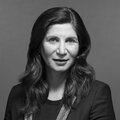Crossposted on The Huffington Post
Preventing terrorist attacks in New York City is an enormous responsibility. And many New Yorkers owe a debt of gratitude to the New York Police Department for keeping us safe. But in its effort to fight terrorism, the NYPD has also gone too far. A complaint filed in Brooklyn federal court on Tuesday alleges that the NYPD violated American Muslims’ constitutional rights by monitoring them based on nothing more than their religion. An unproven theory that treats religion as a proxy for terrorism underpins the police surveillance program. The Department should jettison its discredited theory and its overly broad surveillance, both of which stigmatize Muslim religious practice in ways that raise serious constitutional concerns.
The purported theory behind the surveillance program is explained in a 2007 NYPD report, “Radicalization in the West: The Homegrown Threat.” Using only a handful of cases, the NYPD claimed it could identify a trajectory of Muslim “radicalization.” Essentially, the report says there is a religious conveyor belt: young Muslim men with political and personal grievances become more religious and this leads inexorably to violence. Almost all of the conduct the NYPD finds suspicious is common amongobservant Muslims: e.g., growing a beard, wearing Islamic clothing, and becoming more involved in community activities. Some terrorists surely display these innocuous behaviors. Of course, so do many Muslims. But the NYPD’s report does not distinguish between terrorists who happen to fit this profile and the overwhelming majority of law-abiding American Muslims.
The NYPD’s social science is contradicted by decades of research showing there is no single path to terrorism and no single terrorist profile. Key federal counterterrorism agencies take the same view. As one of the foremost researchers in the field, Marc Sageman, a former CIA case officer and psychiatrist, recently concludedno one can yet “identify the signature words and behaviors of those who turn to violence.”
Although the NYPD has said its 2007 report was not intended to drive policy, it sure looks that way. Tuesday’s filing is based in part on a Pulitzer Prize-winning investigation by the Associated Press. The AP released NYPD documents showing that the police sent agents into mosques to listen in on religious and political discussions. The police mapped Muslim communities, noting the locations of mosques, restaurants, book stores, and even barbershops. Officers monitored the websites of Muslim student groups and reported daily to top brass on religious events and speakers. It will be hard for the NYPD to deny that the entire community was targeted; scores of police documents reflect that fact.
The lawsuit is brought on behalf of Islamic institutions and individual Muslims who say they suffered concrete harms because of the surveillance program.
Two Brooklyn mosques allege that, well before the AP’s revelations, they became suspicious when young men began showing up who seemed less interested in religious worship than stirring up conversations on controversial subjects. Congregants and mosque leaders assumed these men were police informants, which proved to be correct in at least one instance. The impact on mosques was predictable: drops in attendance, suspicion that any new congregant might be an informant, and the cancellation of community events that they believed would attract police attention.
An imam at one of the mosques says he became so concerned that informants would take his words out of context that he refrained from discussing current events and recorded all his sermons. Another imam began including a witness in private conversations with any newcomer seeking religious or spiritual counseling.
An Islamic charity founded to serve low-income Muslims also claims its operations foundered when it became known that it had been infiltrated by an informant. It lost the support of the mosque out of which it operated, and people became reluctant to give donations for fear of coming under police scrutiny.
The NYPD argues that such aggressive surveillance is necessary to keep New Yorkers safe. Police Commissioner Raymond Kelly has repeatedly claimed that his force thwarted 16 terrorist plots in the past decade. But independent analyses cast serious doubt on that number, as do “success stories” from federal agencies, which take credit for stopping the same plots as the NYPD. And just last year, the commanding officer of the NYPD’s Intelligence Division testified that its eerily named “Demographics Unit” had produced no actionable intelligence for at least six years.
In any event, if the plaintiffs succeed in convincing the court that the Department is targeting Muslims, the NYPD will have to do much more than assert the general usefulness of the program. It will have to demonstrate that its approach is narrowly tailored to address the threat of terrorism. Given the sweeping scope of the NYPD’s surveillance operations, this will be a heavy lift.
This lawsuit shows how the Department’s surveillance constrains the religious practices of law-abiding people. This is precisely the sort of harm against which the constitution protects. The court should put a stop to surveillance of Muslims that is based on little more than stereotypes.
